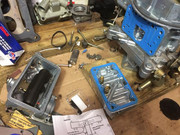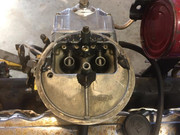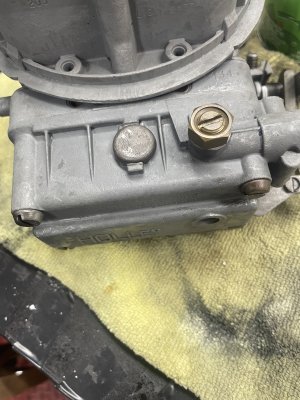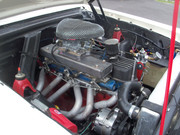I call it a vent for lack of what else to call it. I do know gas comes out there if the float gets stuck. I guess that’s what I want to know is where will it come out if the hole is not there?
Don there's an advantage and disadvantage to externally vented bowls:
Major advantage, it reduces hot soak vapor flooding. The hot carb will vent the evaporating gas form the top of the bowl before it climbs the internal tube and vents down into the intake. This makes cranking time less on a hot engine restart. The last generation of factory carbs had an external vent that had a little stopper door on it so it only vented with the throttle closed. The reason for this leads to the potentially major disadvantage of an always open external vent: it will affect metering of the mixture if the air inlet system has any restriction. Here's how:
An internal bowl vent is exposed to the same pressure as the incoming airstream. Therefore if the air filter or the air inlet plumbing is slightly restricted, the vacuum placed on the vent reduces the head pressure on the fuel in the bowl, reducing the amount of fuel being fed through the jets, thus balancing the reduced air flow with proportionally less fuel. An external vent carb will run rich if the air inlet system is constraining the quantity of air entering the carb.
Unless it's the type of vent that is only open at closed throttle, I always opt for no external bowl vent. My short stint with an old-model 2100 carb- the AFR gauge showed wide variation in the mixture at different road speeds. The bowl was externally vented, and I have a cold air duct which picks up air in front of the radiator support which, at speed, was "forcing" air into the intake system. This threw the metering off because the external vent did not allow the internal vent to read the incoming air pressure and compensate for the different air pressure entering the carb. When I plugged the external bowl vent the issue diminished. There's a reason the new aftermarket carbs do not have a bowl vent.
Ironically, with an internal vent only, excessive airflow restriction will actually make the carb go
lean because the vacuum at the surface of the vent is hydraulically multiplied over the entire surface area of the fuel in the bowl.
Get the new bowl without the vent.














